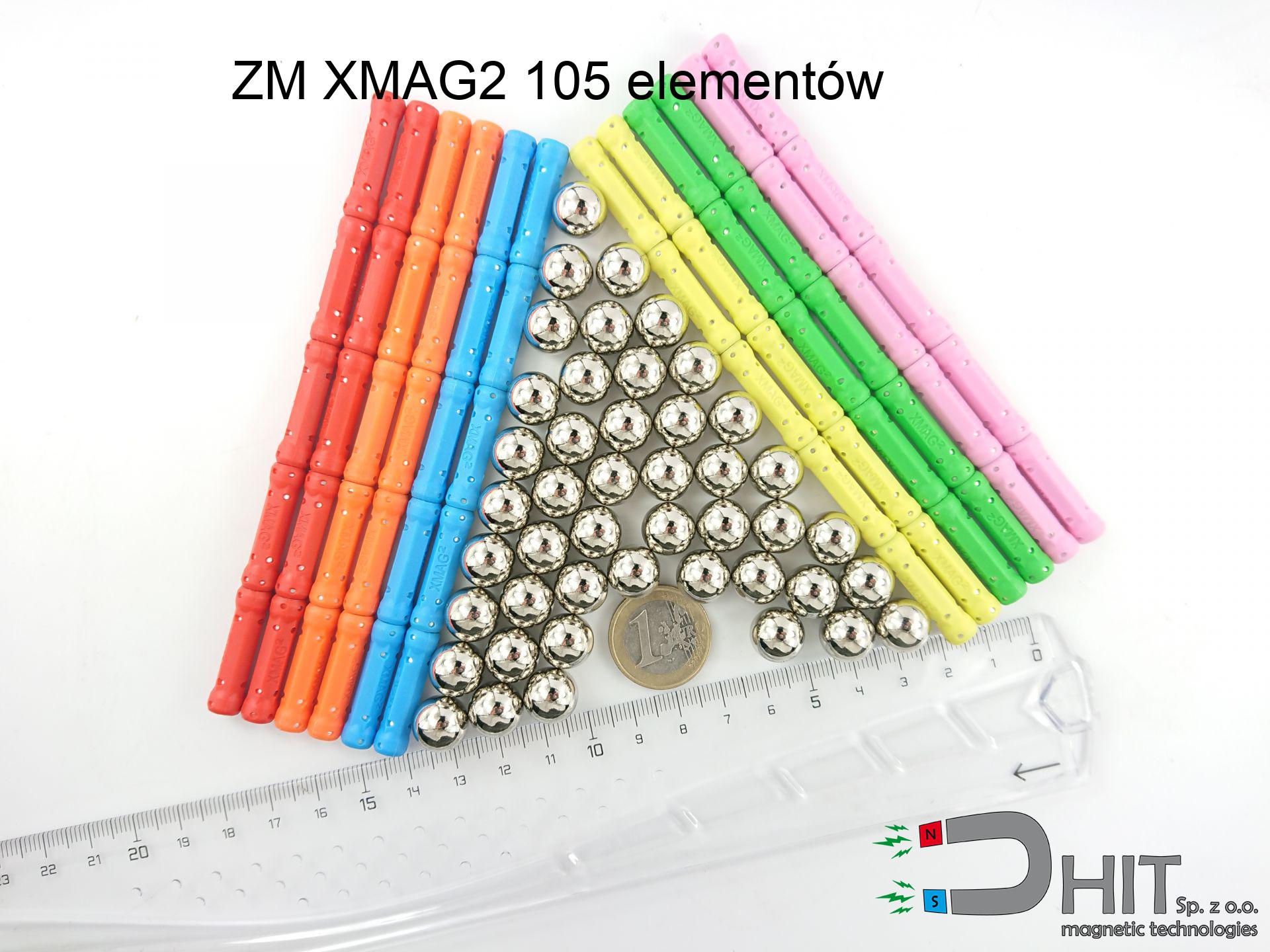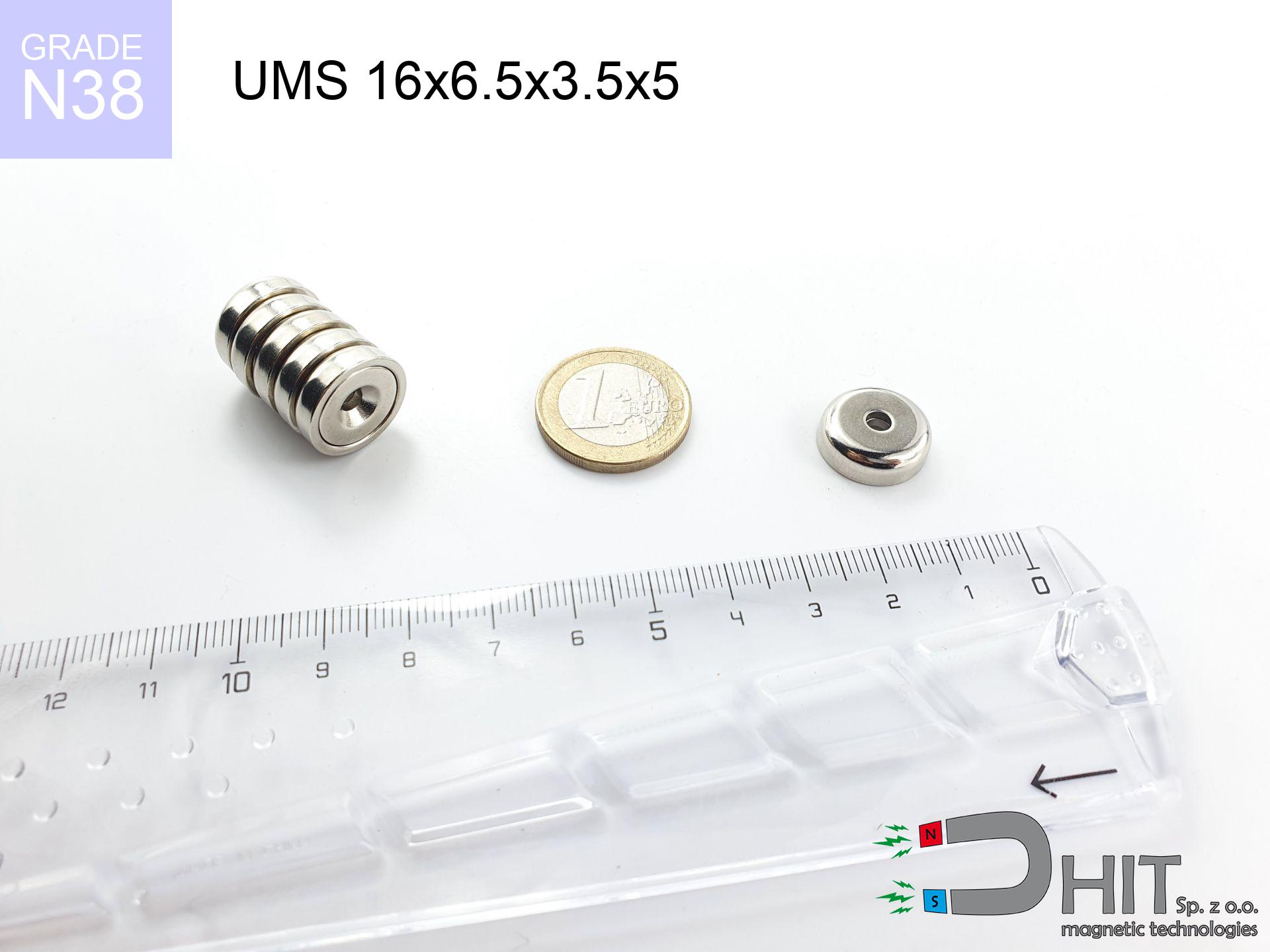SM 32x225 [2xM8] / N42 - magnetic separator
magnetic separator
Catalog no 130375
GTIN/EAN: 5906301813231
Diameter Ø
32 mm [±1 mm]
Height
225 mm [±1 mm]
Weight
1245 g
Magnetic Flux
~ 8 000 Gauss [±5%]
750.30 ZŁ with VAT / pcs + price for transport
610.00 ZŁ net + 23% VAT / pcs
bulk discounts:
Need more?
Give us a call
+48 888 99 98 98
alternatively send us a note through
contact form
through our site.
Specifications along with form of magnets can be tested with our
power calculator.
Orders submitted before 14:00 will be dispatched today!
Technical - SM 32x225 [2xM8] / N42 - magnetic separator
Specification / characteristics - SM 32x225 [2xM8] / N42 - magnetic separator
| properties | values |
|---|---|
| Cat. no. | 130375 |
| GTIN/EAN | 5906301813231 |
| Production/Distribution | Dhit sp. z o.o. |
| Country of origin | Poland / China / Germany |
| Customs code | 85059029 |
| Diameter Ø | 32 mm [±1 mm] |
| Height | 225 mm [±1 mm] |
| Weight | 1245 g |
| Material Type | Stainless steel AISI 304 / A2 |
| Magnetic Flux | ~ 8 000 Gauss [±5%] |
| Size/Mount Quantity | 2xM8 |
| Polarity | circumferential - 8 poles |
| Casing Tube Thickness | 1 mm |
| Manufacturing Tolerance | ±1 mm |
Magnetic properties of material N42
| properties | values | units |
|---|---|---|
| remenance Br [min. - max.] ? | 12.9-13.2 | kGs |
| remenance Br [min. - max.] ? | 1290-1320 | mT |
| coercivity bHc ? | 10.8-12.0 | kOe |
| coercivity bHc ? | 860-955 | kA/m |
| actual internal force iHc | ≥ 12 | kOe |
| actual internal force iHc | ≥ 955 | kA/m |
| energy density [min. - max.] ? | 40-42 | BH max MGOe |
| energy density [min. - max.] ? | 318-334 | BH max KJ/m |
| max. temperature ? | ≤ 80 | °C |
Physical properties of sintered neodymium magnets Nd2Fe14B at 20°C
| properties | values | units |
|---|---|---|
| Vickers hardness | ≥550 | Hv |
| Density | ≥7.4 | g/cm3 |
| Curie Temperature TC | 312 - 380 | °C |
| Curie Temperature TF | 593 - 716 | °F |
| Specific resistance | 150 | μΩ⋅cm |
| Bending strength | 250 | MPa |
| Compressive strength | 1000~1100 | MPa |
| Thermal expansion parallel (∥) to orientation (M) | (3-4) x 10-6 | °C-1 |
| Thermal expansion perpendicular (⊥) to orientation (M) | -(1-3) x 10-6 | °C-1 |
| Young's modulus | 1.7 x 104 | kg/mm² |
Table 1: Rod construction
SM 32x225 [2xM8] / N42
| Parameter | Value | Description / Unit |
|---|---|---|
| Diameter (Ø) | 32 | mm |
| Total length | 225 | mm (L) |
| Active length | 189 | mm |
| Section count | 8 | modules |
| Dead zone | 36 | mm (2x 18mm starter) |
| Weight (est.) | ~1375 | g |
| Active area | 190 | cm² (Area) |
| Housing material | AISI 304 | 1.4301 (Inox) |
| Surface finish | Ra < 0.8 µm | Polished |
| Temp. class | 80°C | Standard (N) |
| Force loss (at max °C) | -12.8% | Reversible loss (physics) |
| Force (calculated) | 17.3 | kg (theor.) |
| Induction (surface) | ~6 500 | Gauss (Max) |
Chart 2: Field profile (8 sections)
Chart 3: Temperature performance
Chemical composition
| iron (Fe) | 64% – 68% |
| neodymium (Nd) | 29% – 32% |
| boron (B) | 1.1% – 1.2% |
| dysprosium (Dy) | 0.5% – 2.0% |
| coating (Ni-Cu-Ni) | < 0.05% |
Sustainability
| recyclability (EoL) | 100% |
| recycled raw materials | ~10% (pre-cons) |
| carbon footprint | low / zredukowany |
| waste code (EWC) | 16 02 16 |
See also proposals
Advantages and disadvantages of rare earth magnets.
Pros
- They virtually do not lose strength, because even after 10 years the performance loss is only ~1% (in laboratory conditions),
- Magnets effectively protect themselves against loss of magnetization caused by external fields,
- The use of an metallic finish of noble metals (nickel, gold, silver) causes the element to have aesthetics,
- Magnets are characterized by extremely high magnetic induction on the outer side,
- Through (adequate) combination of ingredients, they can achieve high thermal strength, enabling action at temperatures approaching 230°C and above...
- Thanks to the ability of accurate molding and customization to custom projects, NdFeB magnets can be produced in a broad palette of forms and dimensions, which makes them more universal,
- Universal use in future technologies – they are utilized in HDD drives, motor assemblies, diagnostic systems, and industrial machines.
- Relatively small size with high pulling force – neodymium magnets offer high power in compact dimensions, which enables their usage in miniature devices
Disadvantages
- To avoid cracks upon strong impacts, we suggest using special steel housings. Such a solution protects the magnet and simultaneously increases its durability.
- We warn that neodymium magnets can lose their power at high temperatures. To prevent this, we recommend our specialized [AH] magnets, which work effectively even at 230°C.
- When exposed to humidity, magnets start to rust. To use them in conditions outside, it is recommended to use protective magnets, such as magnets in rubber or plastics, which prevent oxidation and corrosion.
- Due to limitations in producing nuts and complicated forms in magnets, we recommend using casing - magnetic mount.
- Possible danger resulting from small fragments of magnets are risky, if swallowed, which becomes key in the aspect of protecting the youngest. It is also worth noting that tiny parts of these devices are able to be problematic in diagnostics medical after entering the body.
- High unit price – neodymium magnets cost more than other types of magnets (e.g. ferrite), which hinders application in large quantities
Pull force analysis
Maximum lifting force for a neodymium magnet – what it depends on?
- using a sheet made of low-carbon steel, functioning as a circuit closing element
- possessing a thickness of min. 10 mm to avoid saturation
- with an ground touching surface
- under conditions of gap-free contact (surface-to-surface)
- during pulling in a direction vertical to the plane
- at room temperature
Lifting capacity in real conditions – factors
- Clearance – existence of foreign body (rust, dirt, gap) acts as an insulator, which reduces capacity steeply (even by 50% at 0.5 mm).
- Force direction – remember that the magnet holds strongest perpendicularly. Under sliding down, the capacity drops drastically, often to levels of 20-30% of the maximum value.
- Steel thickness – too thin sheet does not accept the full field, causing part of the power to be escaped into the air.
- Metal type – different alloys reacts the same. Alloy additives worsen the attraction effect.
- Surface condition – ground elements ensure maximum contact, which improves force. Uneven metal reduce efficiency.
- Temperature – heating the magnet causes a temporary drop of induction. Check the thermal limit for a given model.
Lifting capacity testing was carried out on a smooth plate of optimal thickness, under perpendicular forces, whereas under attempts to slide the magnet the load capacity is reduced by as much as 75%. Additionally, even a slight gap between the magnet’s surface and the plate reduces the lifting capacity.
Precautions when working with NdFeB magnets
Danger to the youngest
Absolutely store magnets out of reach of children. Choking hazard is significant, and the effects of magnets clamping inside the body are life-threatening.
Warning for heart patients
Life threat: Strong magnets can turn off heart devices and defibrillators. Do not approach if you have electronic implants.
Pinching danger
Danger of trauma: The pulling power is so immense that it can result in blood blisters, crushing, and broken bones. Protective gloves are recommended.
Avoid contact if allergic
Warning for allergy sufferers: The nickel-copper-nickel coating consists of nickel. If skin irritation occurs, immediately stop working with magnets and use protective gear.
Fire risk
Combustion risk: Neodymium dust is explosive. Avoid machining magnets without safety gear as this risks ignition.
Cards and drives
Do not bring magnets close to a purse, computer, or screen. The magnetic field can permanently damage these devices and wipe information from cards.
Powerful field
Use magnets with awareness. Their powerful strength can shock even professionals. Plan your moves and do not underestimate their power.
Magnet fragility
Beware of splinters. Magnets can fracture upon violent connection, launching sharp fragments into the air. We recommend safety glasses.
GPS and phone interference
A powerful magnetic field disrupts the operation of compasses in phones and navigation systems. Maintain magnets near a device to prevent breaking the sensors.
Maximum temperature
Standard neodymium magnets (N-type) lose power when the temperature surpasses 80°C. This process is irreversible.

![Separation magnetic rod SM 32x225 [2xM8] / N42 Separation magnetic rod SM 32x225 [2xM8] / N42](https://cdn3.dhit.pl/graphics/banners/magnet.webp)
![SM 32x225 [2xM8] / N42 - magnetic separator](https://cdn3.dhit.pl/graphics/products/sm-32x225-2xm8-dob.jpg)



![SM 18x150 [2xM5] / N42 - magnetic separator SM 18x150 [2xM5] / N42 - magnetic separator](https://cdn3.dhit.pl/graphics/products/sm-18x150-2xm5-pec.jpg)

